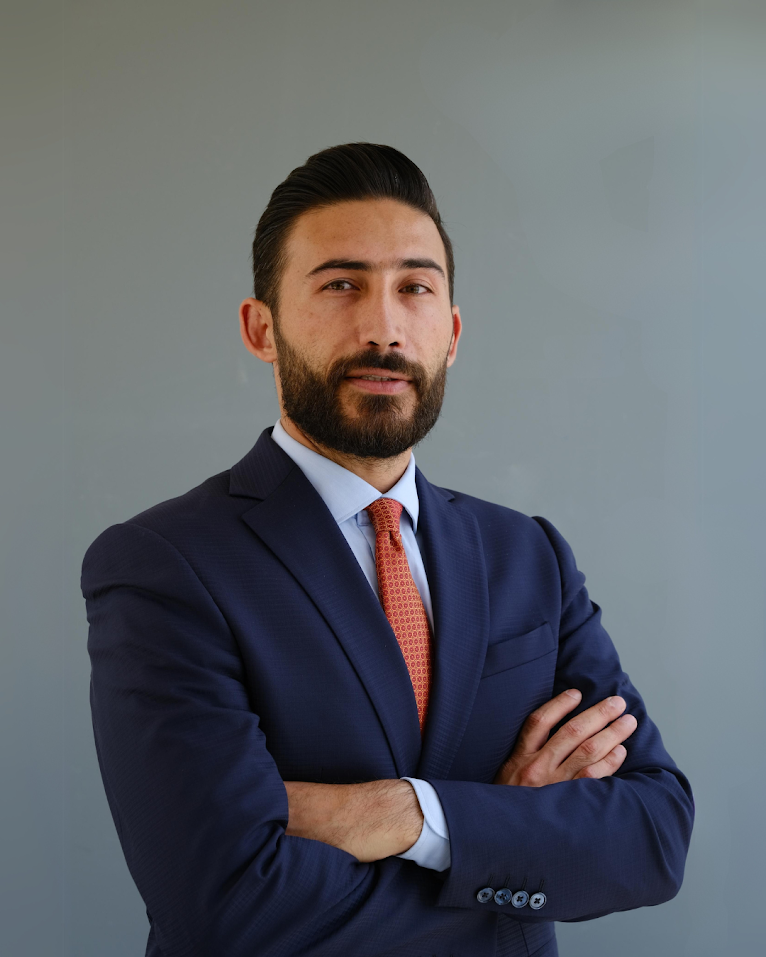Geopolitics and trade headwinds reignite market volatility
By Daniela Sabin Hathorn, senior market analyst at Capital.com
Geopolitical Shock: Escalation in the Middle East
Markets were caught off guard late last week by a sudden flare-up in Middle Eastern tensions. Although investors were becoming increasingly cautious following reports of the U.S. removing key diplomatic personnel from embassies in Iraq, and prior warnings from Israel regarding potential strikes on Iranian nuclear facilities, the reality of military action sent shockwaves through global markets.
The threat of Israeli military action has loomed for years, but this time, it materialized with significant implications. The challenge now is how markets will price the risks associated with an unpredictable and potentially escalating conflict. Unlike traditional economic policies or fiscal changes, the ramifications of war are complex and difficult to quantify. Investors are left with little choice but to react swiftly—often selling first and reassessing later.
Market Reactions
One of the most difficult tasks for market participants is evaluating the impact of war risks. Whereas economic metrics allow for at least some predictive modelling, geopolitical instability—especially when involving major powers such as the U.S. and Iran—introduces a layer of uncertainty that resists quantification.
This latest conflict has direct implications for energy markets. The strikes targeted Iranian nuclear infrastructure, allegedly in response to Iran nearing the capability to produce a nuclear weapon. In retaliation, Iran has threatened to close the Strait of Hormuz—a key global shipping route. Meanwhile, Israeli forces have reportedly targeted Iranian gas and oil refineries, raising concerns over a major supply disruption.
Although Iranian oil has technically been sanctioned for years, a substantial volume has continued to reach global markets through circumventive channels. Therefore, any credible threat to halt this flow could have profound effects—both as a supply shock and a trigger for inflationary pressures worldwide.
Energy and Equity Markets: Volatility on the Rise
As the week began, energy markets reflected heightened tensions. Oil prices, which surged on Friday, saw a modest pullback as trading resumed. Natural gas followed a similar pattern—spiking early before dipping slightly. These movements suggest that investors are closely monitoring developments, bracing for potential volatility.
US Crude (WTI) daily chart

Past performance is not a reliable indicator of future results.
Equity markets also suffered. The downturn began last week and continued into Monday. European indices like the DAX have started the week attempting to recover some momentum. However, investors are likely to remain on a risk-off mode, reassessing positions amidst geopolitical tension and uncertainty.
U.S.–China Talks Stagnate
Compounding the volatility are continued trade tensions between the U.S. and China. Hopes for meaningful progress from recent talks in London were largely unmet. Despite initial optimism, the discussions yielded little beyond reaffirmations of mutual cooperation and the need to address long-standing concerns, including intellectual property rights and national security.
Both nations remain firm in their intention to protect their competitive advantages. A firm resolution or rollback of export restrictions appears unlikely in the near term. Markets, possibly expecting incremental progress, were disappointed. The stalemate reinforces the notion that this issue will drag on, with the potential for further strain on global trade flows.
A particularly striking comment from Chinese officials—that they do not wish to escalate but are prepared to respond if provoked—highlighted the fragile state of relations. This added to investors' unease, emphasizing the long and uncertain road ahead in trade negotiations.
Softer U.S. Inflation Offers Some Relief
In contrast to geopolitical and trade-related headwinds, U.S. inflation data provided a small measure of relief. Both headline and core CPI came in below expectations last week, driven in part by falling energy prices. This raised hopes that the Federal Reserve may eventually ease monetary policy, though a rate cut does not appear imminent.
The softer inflation figures helped U.S. equity markets show some relative resilience compared to Europe and Asia. However, overall sentiment remains cautious, with macroeconomic uncertainty and geopolitical risk keeping investors on edge.
Outlook
In summary, this week begins with a volatile mix of geopolitical tension, stagnating trade talks, and cautious optimism stemming from inflation data. The energy market is especially vulnerable, and global equities are poised for further instability.
Markets may find some footing if diplomatic channels prevail, but the risk of further escalation in the Middle East—and prolonged uncertainty in U.S.–China relations—will likely keep investors jittery for the foreseeable future.
تحليل: الاضطرابات السياسية والرياح التجارية المعاكسة تعيد إشعال تقلبات الأسواق المالية حول العالم
بقلم دانييلا سابين هاثورن ، محلل سوق أول في Capital.com
صدمة جيوسياسية: التصعيد في الشرق الأوسط
فوجئت الأسواق في أواخر الأسبوع الماضي باشتعال مفاجئ في التوترات السياسية بالشرق الأوسط. وعلى الرغم من أن المستثمرين أصبحوا حذرين بشكل متزايد بعد تقارير عن قيام الولايات المتحدة بنقل الموظفين الدبلوماسيين الرئيسيين من سفارتها في العراق ، وتحذيرات مسبقة من إسرائيل بشأن ضربات محتملة على المنشآت النووية الإيرانية ، إلا أن واقع العمل العسكري أرسل موجات صدمة في الأسواق العالمية.
لقد كان التهديد بالعمل العسكري الإسرائيلي يلوح في الأفق منذ سنوات، ولكن هذه المرة، تجسد له تداعيات كبيرة. ويكمن التحدي الآن في كيفية قيام الأسواق بتسعير المخاطر المرتبطة بصراع لا يمكن التنبؤ به ويحتمل أن يتصاعد. على عكس السياسات الاقتصادية التقليدية أو التغييرات المالية، فإن تداعيات الحرب معقدة ويصعب تحديدها كميا. لا يترك للمستثمرين خيار سوى التفاعل بسرعة - غالبا ما يبيعون أولا ويعيدون التقييم لاحقا.
ردود فعل الأسواق
واحدة من أصعب المهام التي يواجهها المتعاملون في الأسواق هي تقييم تأثير مخاطر الحرب. في حين أن المقاييس الاقتصادية تسمح على الأقل ببعض النمذجة التنبؤية، فإن عدم الاستقرار الجيوسياسي - خاصة عندما يشمل القوى الكبرى مثل الولايات المتحدة وإيران - يقدم طبقة من عدم اليقين تقاوم القياس الكمي.
هذا الصراع الأخير له آثار مباشرة على أسواق الطاقة. استهدفت الضربات البنية التحتية النووية الإيرانية، بزعم أنه رد على اقتراب إيران من القدرة على إنتاج سلاح نووي. وفي مقابل ذلك، هددت إيران بإغلاق مضيق هرمز - وهو طريق شحن عالمي رئيسي. في غضون ذلك، أفادت التقارير أن القوات الإسرائيلية استهدفت مصافي الغاز والنفط الإيرانية، مما أثار مخاوف بشأن انقطاع كبير في الإمدادات.
على الرغم من أن النفط الإيراني قد تعرض لعقوبات فنية لسنوات، إلا أن كمية كبيرة منه استمرت في الوصول إلى الأسواق العالمية من خلال قنوات التحايل. لذلك، فإن أي تهديد موثوق به لوقف هذا التدفق يمكن أن يكون له آثار عميقة - كصدمة للعرض ومحفز للضغوط التضخمية في جميع أنحاء العالم.
أسواق الطاقة والأسهم: التقلبات في ازدياد
مع بداية الأسبوع ، عكست أسواق الطاقة توترات متزايدة. وشهدت أسعار النفط ، التي ارتفعت يوم الجمعة ، تراجعا متواضعا مع استئناف التداول. اتبع الغاز الطبيعي نمطا مشابها - ارتفع مبكرا قبل أن ينخفض قليلا. تشير هذه التحركات إلى أن المستثمرين يراقبون التطورات عن كثب ، ويستعدون للتقلبات المحتملة.
الرسم البياني اليومي للخام الأمريكي (WTI)

الأداء السابق ليس مؤشرا موثوقا به للنتائج المستقبلية.
كما عانت أسواق الأسهم. بدأ الانكماش الأسبوع الماضي واستمر حتى يوم الاثنين. بدأت المؤشرات الأوروبية مثل مؤشر داكس الأسبوع في محاولة لاستعادة بعض الزخم. ومع ذلك ، من المرجح أن يظل المستثمرون في وضع الابتعاد عن المخاطرة ، ويعيدون تقييم المراكز وسط التوتر الجيوسياسي وعدم اليقين.
الجمود في المحادثات بين الولايات المتحدة والصين
ومما يزيد من تفاقم تقلبات الأسواق استمرار التوترات التجارية بين الولايات المتحدة والصين. ولم تتحقق الآمال في إحراز تقدم ذي مغزى من المحادثات الأخيرة في لندن إلى حد كبير. وعلى الرغم من التفاؤل الأولي، لم تسفر المناقشات عن سوى القليل من التأكيدات على التعاون المتبادل والحاجة إلى معالجة الشواغل الطويلة الأمد، بما في ذلك حقوق الملكية الفكرية والأمن القومي.
ولا تزال كلتا الدولتين حازمتين في عزمهما على حماية مزاياهما التنافسية. يبدو من غير المرجح التوصل إلى حل حازم أو التراجع عن قيود التصدير على المدى القريب. أصيبت الأسواق بخيبة أمل ، ربما تتوقع تقدما تدريجيا. ويعزز هذا الجمود فكرة أن هذه القضية ستستمر، مع احتمال حدوث مزيد من الضغط على تدفقات التجارة العالمية.
وسلط تعليق ملفت للنظر بشكل خاص من المسؤولين الصينيين - بأنهم لا يرغبون في التصعيد ولكنهم مستعدون للرد إذا تم استفزازهم - الضوء على الحالة الهشة للعلاقات. وزاد ذلك من عدم ارتياح المستثمرين، مؤكدا على الطريق الطويل وغير المؤكد الذي ينتظرنا المفاوضات التجارية.
التضخم الضعيف في الولايات المتحدة يوفر بعض الراحة
على عكس الرياح المعاكسة الجيوسياسية والمتعلقة بالتجارة ، قدمت بيانات التضخم الأمريكية قدرا صغيرا من الراحة. جاء كل من مؤشر أسعار المستهلكين الرئيسي والأساسي أقل من التوقعات الأسبوع الماضي ، مدفوعا جزئيا بانخفاض أسعار الطاقة. أثار هذا الآمال في أن الاحتياطي الفيدرالي قد يخفف السياسة النقدية في نهاية المطاف ، على الرغم من أن خفض سعر الفائدة لا يبدو وشيكا.
ساعدت أرقام التضخم الضعيفة أسواق الأسهم الأمريكية على إظهار بعض المرونة النسبية مقارنة بأوروبا وآسيا. ومع ذلك، لا تزال المعنويات العامة حذرة، حيث تبقي عدم اليقين على الاقتصاد الكلي والمخاطر الجيوسياسية المستثمرين على حافة الهاوية.
التوقعات
باختصار ، يبدأ هذا الأسبوع بمزيج متقلب من التوترات الجيوسياسية ، والمحادثات التجارية المتعثرة، والتفاؤل الحذر النابع من بيانات التضخم. وسوق الطاقة ضعيف بشكل خاص، والأسهم العالمية مهيأة لمزيد من عدم الاستقرار.
قد تجد الأسواق بعض التفاؤل الحذر إذا سادت القنوات الدبلوماسية، لكن خطر حدوث المزيد من التصعيد في الشرق الأوسط - وعدم اليقين المطول في العلاقات بين الولايات المتحدة والصين - من المرجح أن يبقي المستثمرين متوترين في المستقبل المنظور.




